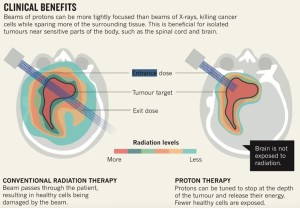A public lecture by Professor Thomas Bortfeld, Medical Physicist, Massachusetts General Hospital and Harvard Medical School.
Dr Bortfeld received his Ph.D. in Physics from the University of Heidelberg, Germany, in 1990. He started his career at the German Cancer Research Center (DKFZ) in Medical Physics, interrupted by a short postdoctoral fellowship at the MD Anderson Cancer Center in Houston. He was instrumental in the early development of intensity modulated radiation therapy (IMRT), including inverse planning algorithms and delivery of IMRT with multileaf collimators (MLC). His work enabled the first clinical deployment of MLC-based IMRT at the Memorial Sloan Kettering Cancer Center in New York in 1995. Since 2001 Dr. Bortfeld has been at the Massachusetts General Hospital (MGH) in Boston, where he developed and deployed multi-criteria optimization and robust optimization of treatment plans. In 2008 he was promoted to Professor at the Harvard Medical School and Chief of the Radiation Biophysics Division at MGH. His current research interests are imaging-guided temporo-spatial optimization of treatment delivery, better ways to define the clinical target volume, and making the benefits of proton therapy available to more patients.
- When: Monday, 4 November 2019
- Where: Woolnough Lecture Theatre, Geology Building, The University of Western Australia
Even though cancer is far from being universally curable, there has been significant progress in its treatment over the past few decades. In the Unites States, for example, the five year survival rate after diagnosis of cancer, has increased from 50% in the 1970s to 67% in the 2010s. This improvement is not only due to advances in clinical research, cancer biology, and pharmaceutics, but largely also due to advances in physics.
Over the past decades, physicists have developed three-dimensional anatomic imaging (e.g., computed tomography) and functional imaging (e.g., magnetic resonance imaging and positron emission tomography), which have revolutionized cancer diagnosis as well as our ability to target the disease with various treatment modalities such as surgery and radiation. In radiation therapy physicists have made particularly important contributions. For example, the development of intensity-modulated radiation therapy (IMRT) allows doctors today to focus radiation on the tumor and spare surrounding healthy tissues to a degree that has been previously unachievable. Yet another level of “conforming” radiation dose to tumors while avoiding surrounding organs is achievable with proton beams and heavier ions (see figure). The first proton therapy center in Australia is currently under development in Adelaide.
In this lecture Professor Bortfeld will review some of these contributions of physicists to medicine through his own lens as a physicist working in a hospital and at a medical school, based on his experience with the development of IMRT and proton therapy. He will also give an outlook into the future role that physicists may play in the search for a cancer cure. This should go beyond imaging and radiation therapy and be driven by grand challenges and provocative questions, which are being defined in collaboration with Professor Martin Ebert at The University of Western Australia. It should focus on the understanding of physical mechanisms underlying the evolution, growth, spread, and treatment of cancer. It should include the modelling and optimization of combinations of treatment modalities, and the probing of the patient’s dynamic response to the treatment for individually optimized treatments.



